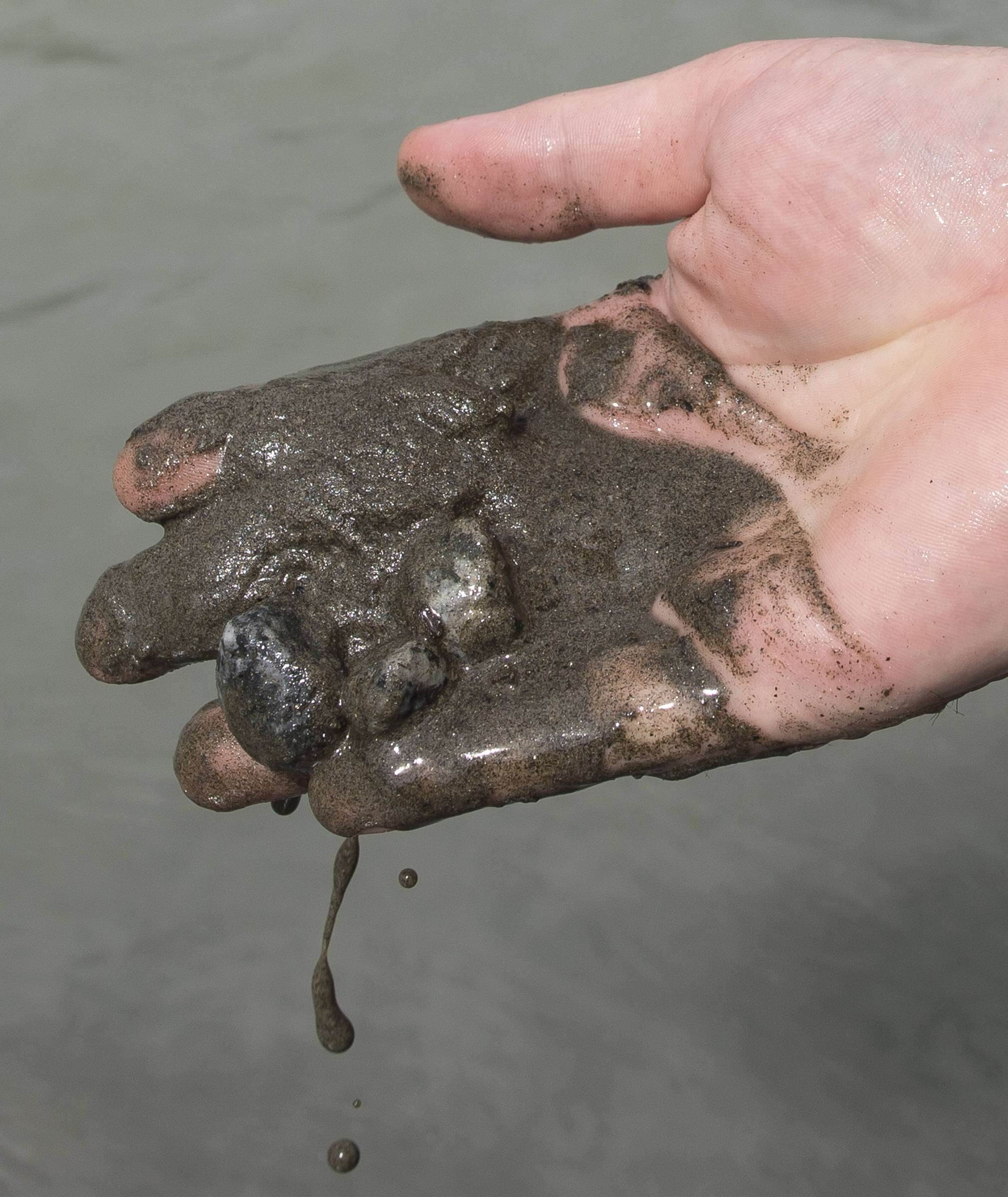Empire reader Mackey Migel wrote a few weeks ago with a simple question: What is glacial flour?
The short answer is that it’s ground up rock. And no, you can’t cook with it (it’s ground up rock).
The long answer has to do with the mechanical action of glaciers and the strength of ice.
University of Alaska Southeast professor Eran Hood studies watershed-scale biogeochemistry, snow and alpine hydrology — to put it simply, Hood knows a lot about water in all its states. Glaciers are frozen rivers and they grind down the rock underneath them, Hood explained. The massive weight of the glacier creates tiny bits of rock called glacial flour, also known as rock flour or glacial silt.
“It’s basically just bedrock that has been mechanically ground up to a fine silt-size particles,” Hood said.
Its small size sets it apart from other small rocks, sand and pebbles.
“What distinguishes it in terms of looking at a glacial river is the silt is fine enough material that it can stay in suspension in the water column. … It has that grey color if you look at Mendenhall River or any of the other glacier rivers,” Hood said.
The Mendenhall Glacier produces a lot of glacial flour every year. Hood and his colleagues measure the amount of suspended sediment in the Mendenhall River with scientific equipment on Back Loop Road. That allows them to estimate how much glacial flour the Mendenhall Glacier produces.
On average, Hood calculates, the Mendenhall River exports about 114 million pounds of glacial flour to the ocean every year. That’s about 1.3 million cubic feet of material, or about 14.8 olympic swimming pools full of glacial flour.
“There’s deposits of it everywhere,” Hood said. If you stand on the edge of Mendenhall Lake, or near the water at Eagle Beach State Recreation Area, you’re likely standing on glacial flour.
And the Mendenhall Glacier isn’t even the biggest producer of glacial flour in the Juneau area. Much of the glacial flour the Mendenhall Glacier produces settles out in Mendenhall Lake. Glaciers that don’t feed into lakes, like Herbert Glacier, north of Juneau on the road system, send far more glacier flour into the ocean.
“The sediment that is washed out from under Mendenhall gets trapped in the lake so glaciers that do not have lakes in front of them (like Herbert Glacier) can export far more glacier flour out to the ocean,” Hood wrote in an email to the Empire.
What effect does this have on the environment? About half of the water in the Gulf of Alaska comes from glacial melt, current estimates hold. In Southeast, about 30 percent of all the water flowing from land to sea is glacier melt water.
It’s not yet known what animals prefer glacial melt water and which don’t. An ongoing study which the Empire wrote about last fall could add to that understanding.
Hood said that one thing is known: glacial flour adds more iron to the environment. Chemical reactions with water slowly dissolve the iron in rock, he explained. With larger rocks, that happens very slowly. That’s because there’s not much surface area in a large boulder compared the weight of rock.
But the small size of glacial flour increases this weight to surface area ratio, speeding up the rate at which iron dissolves into water. It’s the same principle at work with ice. Small cubes of ice dissolve quicker in water compared to large cubes.
• Contact reporter Kevin Gullufsen at kevin.gullufsen@juneauempire.com, 523-2228 or on Twitter @KevinGullufsen.

